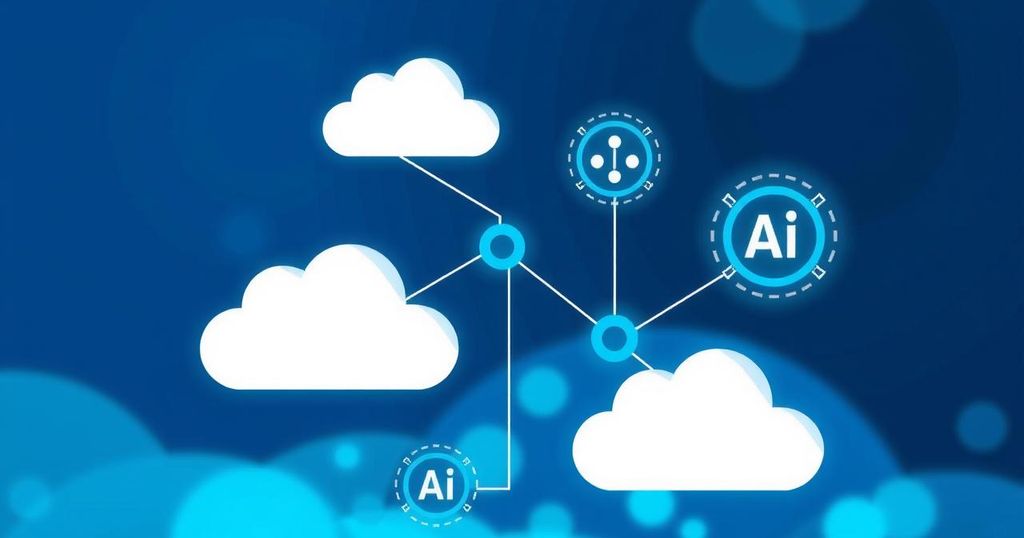Cloud Trends to Watch in 2025: The Age of AI and Multi-Cloud Strategies
As we approach 2025, key cloud trends are emerging, heavily influenced by AI. These include the rise of generative AI, multi-cloud strategies, heightened security needs, and innovative cyber recovery methods. Organizations must balance rapid adaptation to new technologies with challenges in privacy and compliance amidst evolving market demands.
A host of evolving trends is reshaping the cloud landscape as we glance towards 2025. Organizations are diving deeper into cloud services, driven largely by ambitions for competitiveness and the transformative power of artificial intelligence (AI). With not just cost savings, but innovative growth at stake, businesses are ramping up their cloud strategies. John Samuel, from CGS, suggests that generative AI (GenAI) is set to be a significant force driving these changes.
“We anticipate a continued growth of a few significant cloud trends for 2025, with the rise of GenAI being a major driver,” states John Samuel, CGS’s global CIO and EVP. He highlights how cloud providers are heavily pouring funds into GenAI technology, teaming up with chip makers to boost performance and scalability. The effects ripple through the industry, pushing downstream SaaS developers to create more user-friendly AI-based solutions. In a nutshell, GenAI is quickly become the backbone for advanced AI adoption across various sectors.
Meanwhile, Mike Stawchansky, CTO at Finastra, raises a red flag regarding privacy and contractual complications surrounding customer data usage for GenAI. Users crave the insights that GenAI promises, yet many hesitate to allow broad access to their data. As AI’s resource-heavy demands press on, businesses are faced with capacity challenges.
“Capacity issues are becoming more frequent as organizations grapple with the resource-heavy workloads that AI-powered technologies bring,” warns Stawchansky. He adds that the complications of cloud data compliance in different regions may stymie this expansion. Companies that don’t jump on the AI experimentation bandwagon risk being left behind in the tech race. On the flip side, cloud security is heating up as well, with AI poised to play a crucial role.
Or Shoshani, co-founder and CEO at Stream.Security, notes that security teams will begin utilizing AI for automating threat detection and response. “The volume of exposures and threats…means that effective remediation relies on AI-guided support,” he says. Current security processes, often designed for traditional, on-premise setups, are simply not cutting it anymore. The cloud’s unique environment demands a fresh approach.
Looking more closely at upcoming trends, multi- and hybrid cloud setups are gaining traction, as organizations want the flexibility to pull services from various sources. Samuel with CGS argues that, “Enterprises and small- to medium-sized businesses seem ready for trends like GenAI adoption.” Earlier this year, big public cloud providers even waived data transfer fees, paving the way for easier transitions. Wanclouds’ CEO, Faiz Khan, expands on that by stating that a multi-cloud strategy enables training AI models across diverse ecosystems, maximizing efficiency.
However, there’s a catch—timing and costs can obstruct this shift. Businesses are urged to research new cloud solutions thoroughly, balancing immediate expenses with the promise of long-term benefits. Also on the radar is the need for improved monitoring among CISOs. Shoshani emphasizes that SecOps teams must integrate cloud insights into their daily operations to tackle threats efficiently.
“Most SecOps teams are still relying on alert-based tools designed for on-prem environments… which leads to ineffective threat identification,” he mentions. As cloud spending is projected to climb in 2025, fueled by AI pursuits, companies will need to enhance their resources to cope with these evolving demands.
Samuel notes that landing zones, which streamline cloud adoption, are also set for a rise. They promise quicker responses for regulatory compliance—vital for industries like finance and healthcare where speed is paramount.
The race against modern cyber threats is intensifying too, with organizations harnessing AI not just to defend but also for preparing rigorous recovery simulations. Matt Waxman from Veritas Technologies explains how AI is pivotal in staging “ransomware wargames” within digital cloud replicas.
Finally, there’s an intriguing future in space. Waxman envisions the potential of datacenters lifted into orbit, harnessing unique conditions that could redefine energy efficiencies. Yet hurdles like latency make this advent an ongoing challenge.
As all these trends unfold in 2025, organizations will need to strap in and adapt fast to stay afloat in a whirlwind of change.
The cloud landscape is on the cusp of major shifts as we look ahead to 2025. Generative AI is leading the charge, fundamentally altering how businesses engage with cloud technologies. With rising security concerns and privacy debates, firms must balance innovation with the imperative of data protection. Trends like multi-cloud strategies, enhanced monitoring, and landing zones reflect a growing maturity in cloud adoption, while organizations must prepare for advanced cyber challenges and even entertain the glimmers of space-based computing. Navigating this complex ecosystem will be critical for staying ahead.
Original Source: www.informationweek.com




Post Comment